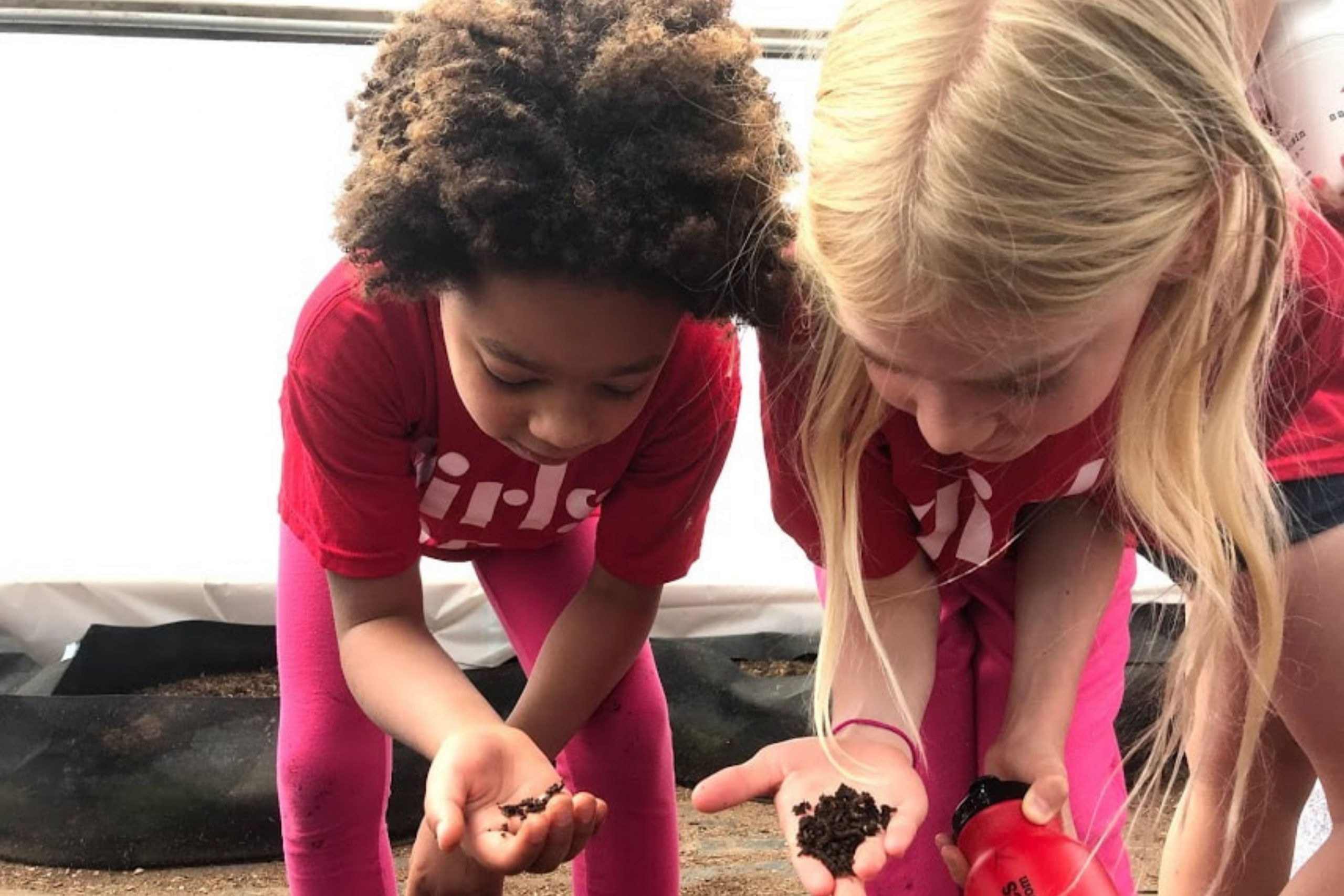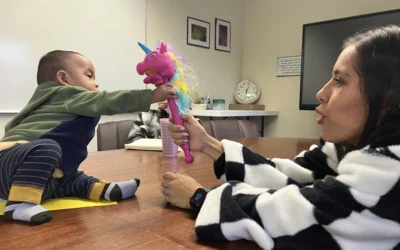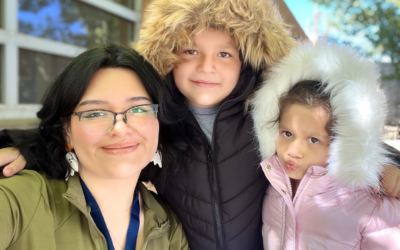Growing Together
Gardening projects raise yummy veggies and happy families.
Gardening serves as my growth chart for my children, since I’ve forgotten to measure their heights in the doorframe all but twice. Each spring, they are able to carry a larger shovel or lift a larger watering can, and each August they wait more patiently for the tomatoes and raspberries to ripen rather than pluck them when they’re all green.
Gardening is also a growth chart for me, as each year I find myself more realistic about how many projects I can complete in a season and more focused on the process of being in the garden together, rather than on visions of garden grandiosity and humongous harvests. Growing food is a metaphor for our very lives and can be one of our greatest teachers: from the cycles of the seasons to the benefits of biodiversity and healthy, interdependent relationships.
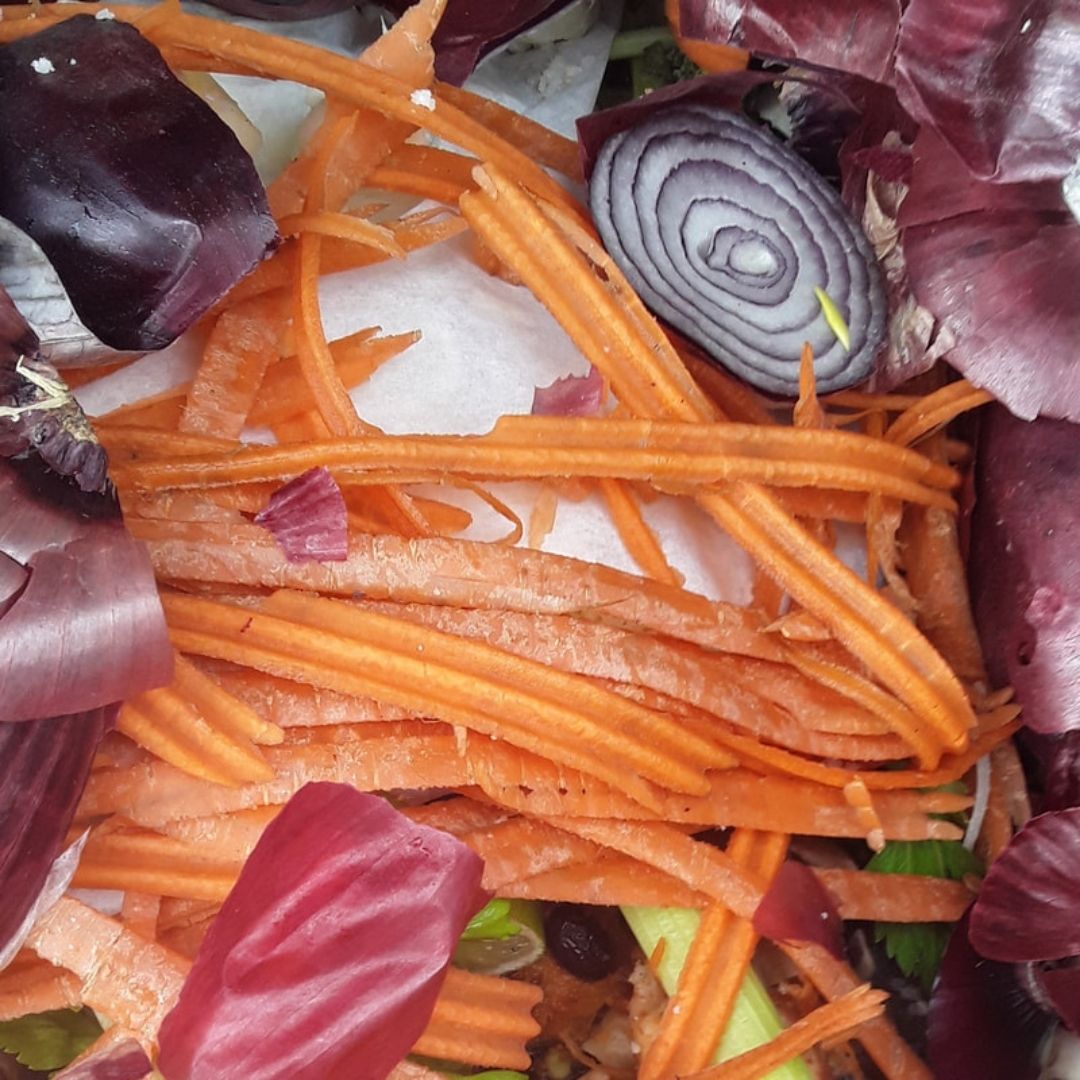
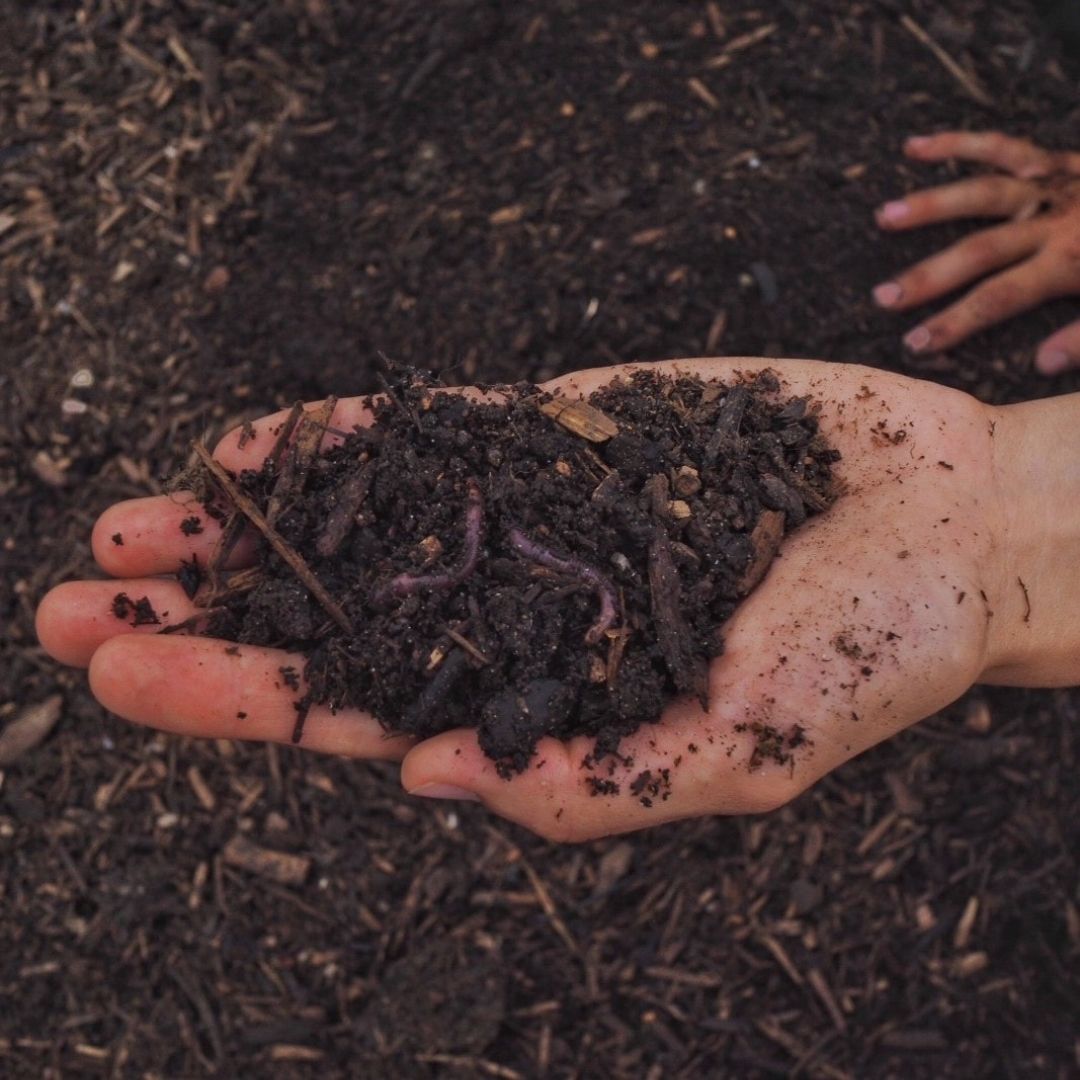
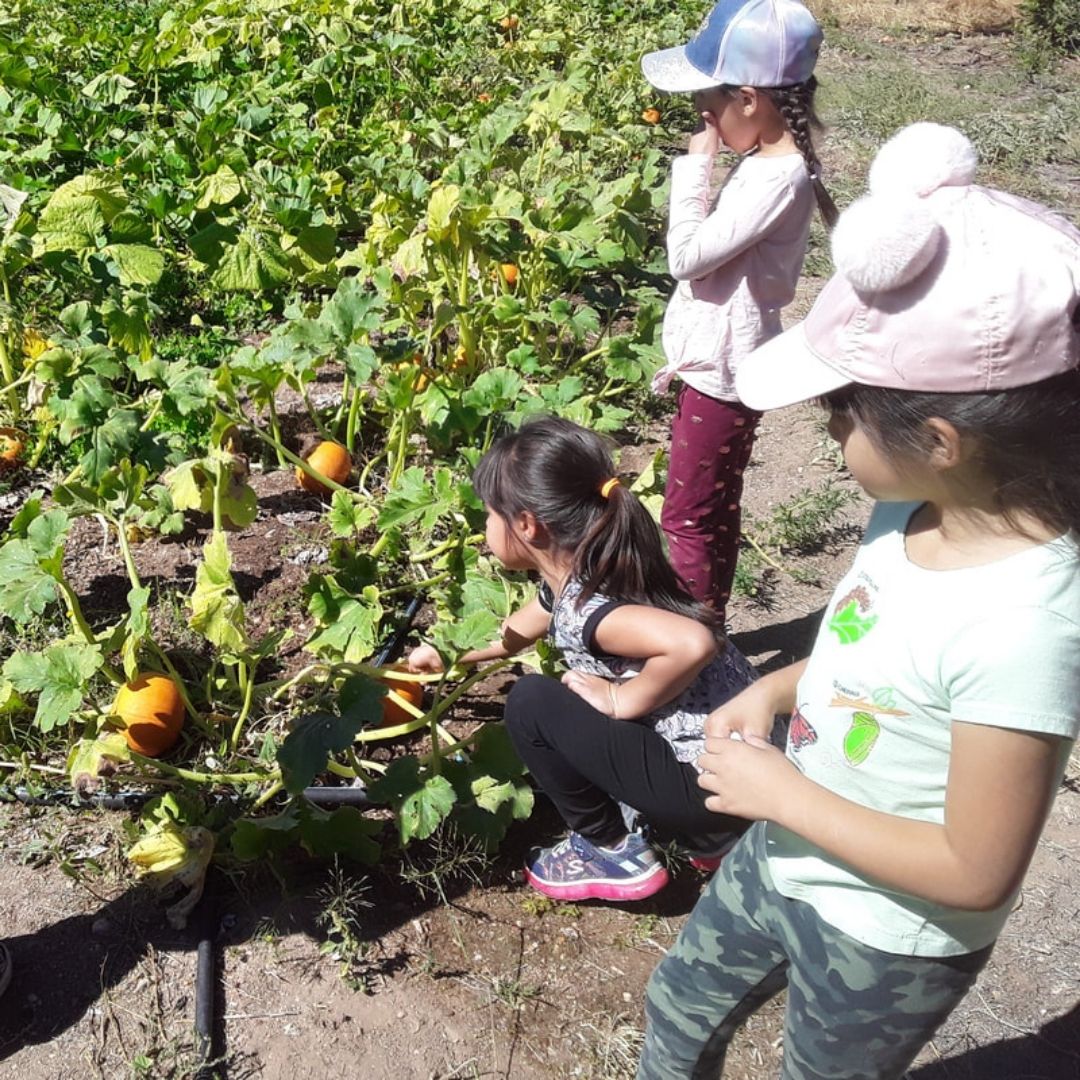
Beyond that, experiencing the life, death and transformation inherent in the food cycle normalizes and celebrates each of these stages in our own lives — a composting apple core being consumed by a worm is as thrilling as a sprouting seed. That is the founding principle of the organization we work with: Reunity Resources.
Reunity Resources practices a full circle of the food system. That means that beyond growing food, and eating or preserving it, we compost all the scraps and feed the compost right back to the soil to build a healthier soil/food web. Each component is fun to participate in for children and adults: separating food scraps, watching something that might be stinky in the kitchen bucket undergo a complete conversion into sweet-smelling soil amendment. Checking on the worms in the vermicompost, volunteering to spread that compost in the fields, sharing food in the community fridge, climbing a tree or enjoying a meal made with freshly harvested flavors at the food cart.
As we gradually transition into the next phase of the pandemic recovery, the seeds of hope we sow together this year feel more poignant than previous seasons. Given the emotional long haul that we’ve collectively experienced through the loss, grief and uncertainty of the past year, we need the reawakening that a sprouting seed can offer. I recently read about the concept of “languishing” and the importance of recognizing and naming if you are feeling aimless, unfocused and foggy, then taking steps to replenish your languishing spirit. Recommendations included setting small achievable goals, providing yourself uninterrupted time to work on a task (with no phone dings!) and finding ways to re-weave connections (with outdoor time together being one of the COVID-safest options).
Growing food at home, with friends and family or in a community garden/farm setting can be one way to bolster yourself and your family socially, emotionally and physically this summer. In planting a seed, you are creating your own living metaphor for the cycles of life and the delicate balance between the predictable and capricious elements around us.
Beyond the anecdotal evidence many share that their garden is their happy place, evidence reveals that microbes in healthy soil, namely Mycobacterium vaccae, actually mimic serotonin in the brain and support mental health.
Maybe this is the season you’ll start. You don’t necessarily need a lot of space, time, water and knowledge. It can be deeply rewarding to grow a few favorite plants in pots; even an old bucket with drainage holes in the bottom will do.
Here are three easy, container-friendly fan favorites (OK, my main fans are my 6- and 8-year-old children!). They are easy to grow and yield family-friendly projects throughout the seasons.

1. Marigolds
Marigolds are not only beautiful and fragrant, but they are also natural pest-deterrents. Easy to grow in a container or on a windowsill, their bright colors are a summer smile. Marigolds are great for making crowns and garlands, and as the flower heads dry, it is ridiculously fun and simple to save seeds from year to year, which become natural confetti.
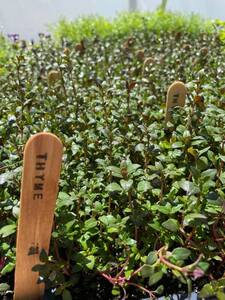
2. Mint
Peppermint, spearmint, chocolate mint…. Mint grows and spreads with benign neglect, which can be very affirming for a beginning high-desert gardener. It can take over an area with vibrant green perfumery. Mint blossoms into violet flowers in late summer, for fun child-made table arrangements. It’s also a refreshing flavor for toddlers to pull leaves off and chew — “nature’s gum,” we would call it. Gathering fresh mint leaves and then adding (with an adult’s help) chunks of watermelon (seeds and all) into a blender can make an amazing and refreshing treat in the form of popsicles, sorbet or agua fresca (I add a little lime juice, too, to make the flavors pop). And we can’t forget mint tea! Fresh or dried leaves from your mint patch, boiling water (or in a glass jar in the sun for hours) and a stir of honey if that’s your thing (it is very much my thing) … and you have an easy, soothing tea to enjoy iced or hot.
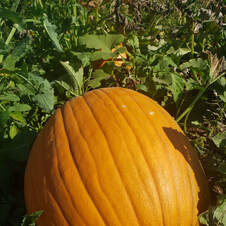
3. Pumpkins
June is a great time to plant a pumpkin seed to be ready for harvest early October. Pumpkins grow on big vines and are usually recommended to be planted on a mound of soil amended with compost, about 10-12 inches tall and 18 inches across — a container or bucket with drainage holes at least 5 gallons in size will also do the trick.
Pick your favorite variety and plant three seeds per bucket — when they sprout (and if you’re happy with it, save seeds when you’re carving it this autumn and keep them in a cool dry place for next year)! Pumpkins love sunshine (though in New Mexico, even “full sun” loving plants can enjoy a respite in the shade for part of the day). Keep your seeds moist until they sprout, and then give them a slow, gentle drink two to four times per week depending on your conditions. As it grows, you can prune off multiple fruits so energy goes into growing one giant pumpkin, or let it produce as many as it will — gardening allows for endless creativity. You’ll know it’s ripe and ready when it has turned orange, it sounds hollow when you thump it with your thumb and the rind feels hard. You can carve or decorate the pumpkin, roast the seeds with salt and oil, or make a from-scratch pie to really savor the slow process of our food’s journey.
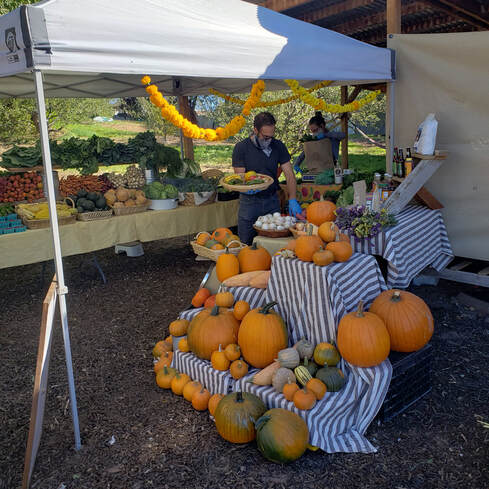
If growing food on your windowsill or patio isn’t an option, there are amazing public spaces you can connect with and enjoy. Options include the community gardens at the Railyard Park, La Familia Medical Center, Frenchy’s Field, Maclovia Street or your public school’s garden (summer volunteers are always needed!), or come on down to the farm at Reunity Resources, at 1829 San Isidro Crossing in Santa Fe. The Farm Stand is open Tuesdays from 3 to 6 p.m. and Saturdays from 9 a.m. to 2 p.m. and Rose’s Kitchen (food truck) is open Tuesday through Friday for lunch and dinner, and Saturday and Sunday for brunch.
This summer, let us heed the lessons of the seeds we sow, and after a long winter, emerge into the sunlight, perhaps timidly, but nonetheless eager to thrive together.

